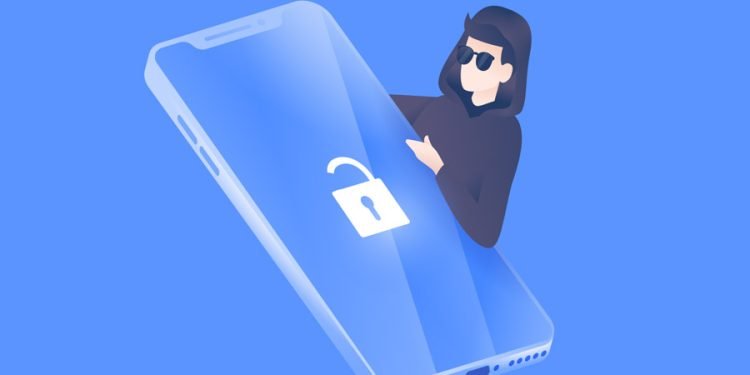In our increasingly connected world, our smartphones are becoming one of our most important pieces of technology. We use them for everything from communication to entertainment to managing our daily lives. But as smartphone usage has skyrocketed, so have the number of ways that hackers can target them.
How do hackers target smartphones?
There are a number of ways that hackers can target your smartphone. One common method is known as “phishing.” This is when a hacker sends you an email or text message with a provocative message like “how to track my boyfriend’s phone location for free” that looks like it’s from a legitimate source but is actually a way to get you to enter your personal information into a fake website. Hackers can also install malicious software, or “malware,” onto your phone that can give them access to your personal data or even allow them to take control of your device.
Another way that hackers target smartphones is by taking advantage of vulnerabilities in the operating system or apps. For example, a hacker might find a way to exploit a flaw in the Android operating system that would allow them to gain access to all of the data on your device. Or they could create a fake app that looks identical to a legitimate app but is actually designed to steal your information.
What are the consequences of being hacked?
If you are hacked, the consequences can vary depending on what type of information the hacker was able to access. If they were able to get a hold of your personal information, such as your name, address, and Social Security number, they could use that information to steal your identity. This can lead to them opening new credit cards in your name, taking out loans in your name, and generally wreaking havoc on your finances.
If the hacker was able to gain access to your email account, they could use it to send spam messages or phishing emails to your contacts. They could also use it to snoop through your old emails and messages to try and find more sensitive information about you.
Finally, if the hacker was able to take control of your smartphone, they could use it to eavesdrop on your conversations, track your location, and even access any personal information that you have stored on your device.
While these are just some of the ways that a hacker could use your stolen information, it’s important to remember that the possibilities are endless. The best way to protect yourself from identity theft and other forms of cybercrime are to be proactive about your online security.
Ways to Protect Yourself from Identity Theft
There are a few key things that you can do to protect yourself from identity theft and other forms of cybercrime:
- Use Strong Passwords
One of the most important things that you can do to protect your online accounts is to use strong passwords. A strong password should be at least 8 characters long and include a mix of upper and lowercase letters, numbers, and symbols. Additionally, you should avoid using easily guessed words like “password” or your birthday.
- Enable Two-Factor Authentication
When available, you should enable two-factor authentication for your online accounts. Two-factor authentication adds an extra layer of security by requiring you to enter a code from your phone in addition to your password when logging in. This makes it much harder for hackers to gain access to your account, even if they have your password.
- Avoid Phishing Emails
Phishing emails are a common way for hackers to steal your login credentials. These emails typically look like they’re from a legitimate company and may even include the company’s logo. However, the email will usually contain a link that goes to a fake website that looks identical to the real website. When you enter your login information on the fake website, the hacker will then have access to your account. To avoid falling for a phishing email, be sure to only click links that you trust and always check the URL of the website before entering your login information.
- Use a Password Manager
One of the best ways to keep your passwords secure is to use a password manager. Password managers are software programs that help you create and store strong passwords. They also have features that can help you stay safe online, such as two-factor authentication and malware detection. Some popular password managers include LastPass, Dashlane, and 1Password.
- Don’t Reuse Passwords
If a hacker gets their hands on one of your passwords, they could try using it to access other accounts that you have. To prevent this from happening, it’s important to never reuse passwords. Instead, make sure that each of your online accounts has a unique password. This may seem like a lot of work, but a password manager can help you keep track of all your different passwords.
- Keep Your Software Up-to-Date
One of the best ways to protect your computer from malware is to keep your software up-to-date. Whenever there’s a new security update for your operating system or any of the programs installed on your computer, be sure to install it as soon as possible. These updates usually contain fixes for various security vulnerabilities that could be exploited by malware.
- Use a Firewall
A firewall is a piece of software or hardware that helps to block unauthorized access to your computer. It’s an important line of defense against many types of attacks, including those from malware. If you have a router, it likely has a built-in firewall that can help protect your network. You can also use a firewall program on your computer itself.
- Be Careful When Downloading Files
One of the most common ways for malware to end up on someone’s computer is through downloads from the internet. Be very careful about what files you download, especially if they come from an untrustworthy source. Make sure you have a good antivirus program installed that can scan files before you open them.
- Keep Your Software Up to Date
One of the best things you can do to protect your computer from malware is to keep your software up to date. This includes your operating system, web browser, and any other programs you have installed. Many times, when a software update is released, it includes security patches that can help protect you from attacks.
- Be Wary of Email Attachments
Another common way for malware to spread is through email attachments. If you get an email with an attachment from someone you don’t know, or even from someone you do know but wasn’t expecting an attachment from, be very careful before opening it. If possible, try to verify that the email and attachment are legitimate before opening them.
- Be Wary of Links in Email
In addition to attachments, email messages can also contain links that lead to malicious websites. These websites can infect your computer with malware or trick you into entering personal information that can be used for identity theft. If you get an email with a link in it, be sure to hover over the link to see where it would take you before clicking on it. If the link looks suspicious, don’t click on it.
Conclusion
Your smartphone is a great tool for communication, but it’s also a great tool for criminals. By following the tips in this article, you can help keep your smartphone safe from malicious software and other threats.












